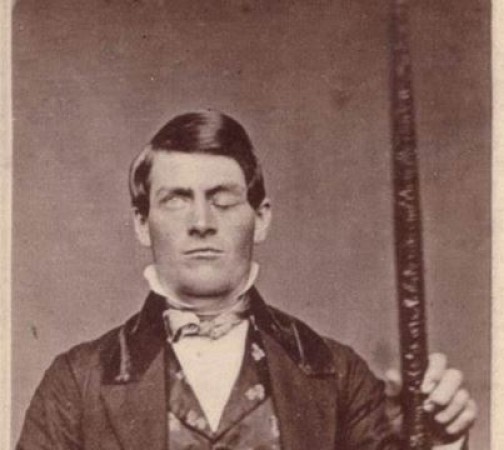
When it comes to understanding the complexities of the human brain, few cases have captured the attention of neuroscientists and the general public alike as much as that of Phineas Gage. In the mid-19th century, an unfortunate accident involving a railroad construction foreman named Phineas Gage gave scientists a rare and invaluable opportunity to explore the brain's inner workings. This article delves into the intriguing story of Phineas Gage, the circumstances surrounding his brain injury, and how this tragic incident led to groundbreaking discoveries in the field of neuroscience.
1. The Accident that Shook the World
In 1848, Phineas Gage was working on the construction of the Rutland and Burlington Railroad in Vermont. One fateful day, a seemingly routine task turned into a life-altering event when a tamping iron—an instrument used to pack explosives into rock—accidentally sparked an explosion. The iron shot through Gage's skull, entering through his cheek and exiting through the top of his head. Astonishingly, Gage remained conscious and coherent throughout the incident.
2. The Aftermath: Personality Transformation
While Phineas Gage survived the accident, his personality underwent a dramatic transformation. Previously known for his responsible and reliable demeanor, Gage became impulsive, irritable, and irresponsible after the injury. This stark behavioral shift caught the attention of Dr. John Martyn Harlow, the physician who treated him, and opened the doors to understanding the brain's role in personality and behavior.
3. The Brain's Frontal Lobe: Unraveling the Mystery
Through the work of Dr. Harlow and subsequent researchers, it became clear that the tamping iron had severely damaged Phineas Gage's frontal lobes. These lobes are responsible for cognitive functions such as decision-making, emotional regulation, and personality traits. Gage's case provided crucial evidence linking specific brain regions to certain psychological and behavioral changes, revolutionizing our understanding of brain localization.
4. Impact on Neuroscientific Research
Phineas Gage's story had a profound impact on the field of neuroscience. His case was one of the earliest pieces of evidence supporting the idea of cerebral localization—different brain regions being responsible for different functions. This concept laid the groundwork for future researchers, such as Paul Broca and Carl Wernicke, to further explore language and cognitive processing.
5. Modern Neuroimaging Techniques: Advancements in Brain Study
Fast forward to the 20th and 21st centuries, and neuroscientific research has seen remarkable advancements. Non-invasive brain imaging techniques, such as functional magnetic resonance imaging (fMRI) and positron emission tomography (PET), allow researchers to study brain activity in living individuals. These technologies have given rise to new insights into the brain's complexity and potential avenues for treating neurological disorders.
6. Ethical Considerations in Brain Research
Phineas Gage's case also raised ethical questions concerning brain research. As the field progressed, researchers had to address issues of informed consent, patient privacy, and the responsible use of emerging technologies. Striking a balance between scientific progress and ethical considerations remains a critical aspect of modern neuroscience.
7. Beyond Phineas Gage: Studying Brain Plasticity
While Gage's case highlighted the importance of localized brain functions, it also drew attention to the brain's remarkable ability to adapt and reorganize. Neuroplasticity, the brain's ability to form new neural connections, has become a focal point in understanding brain injuries and rehabilitation.
8. Phineas Gage in Popular Culture
Beyond the scientific community, Phineas Gage's story has found its way into popular culture. Books, documentaries, and even theatrical productions have recounted the captivating tale of the man whose life-changing injury challenged conventional views of the human brain.
9. The Legacy of Phineas Gage
More than a century and a half after his accident, Phineas Gage's legacy endures. His case remains a testament to the resilience of the human brain and its intricacies. Researchers continue to draw inspiration from Gage's story, pushing the boundaries of neuroscience and unraveling the mysteries of the mind.
Phineas Gage's case stands as an iconic milestone in the history of neuroscience. His tragic accident not only provided valuable insights into the functions of different brain regions but also spurred advances in brain research and neuroimaging techniques. As we move forward, studying the curious case of Phineas Gage reminds us of the boundless potential for discovery that lies within the human brain.
The Lifespan of a Taste Bud: Unraveling the Secrets of Your Sense of Taste